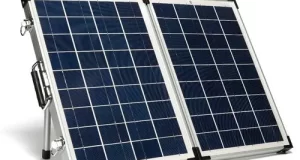Sun collector radiates solar sun into heat that heats in a medium (water, solar fluid, or air). Then solar heat could be used to have boiler water, to backup heating devices and warming up pools.
Using solar power heat Much more in a solar panel is the usual absorber, and is typically made up of a lot of narrow metal strips.
The carrier material for heat transfer flows through the heat-carrying pipe, which can be coupled to the absorber reel. In plate-type absorbers, two sheets are sandwiched together making it possible for the structure to flow between the two sheets. Absorbers are generally constructed from copper or light weight aluminum.

Pool area absorbers, alternatively , are normally made up of plastic material(mostly EPDM, but probably of polypropylene combined with polyethylene),since the lower temperatures involved will not require greater warmth capacity.
schema collector
Heating and storage are united in any reservoir collector. Arrays of reservoir sun collectors don’t require circulating pumps or even controlling mechanisms,as the normal water is warmed and stored right in the collector.
Highly effective absorber surfaces absorbers at sun collectors are usually dark-colored, mainly because dark-colored types of surface present a notably greater level of natural light absorption. The level of consumption signifies the quantity of short-wave photovoltaic rays getting absorbed that means not being reflected. As the absorber heats up to a heat higher than the normal temperature, it emits an excellent amount of the main accumulated solar collectors power in a type of long-wave warmth rays. The ratio of consumed energy to emitted heat is indicated by the degree of emission. In order to reduce energy defeat through heat emission, the most efficient absorbers use a selective area covering. This unique coating enables the conversion process of the huge percentage of your sun collector radiation into high heat, simultaneously reducing the emission of warmth. The typical coatings give a degree of absorption of more than 90%.

Solar paints that may be mechanically put on the absorbers, are much less or not at all selective, when they have a high amount of emission. Galvanically used selective coatings may include dark chrome, black nickel, and aluminum oxide with nickel. Relatively new is a titanium-nitride-oxide layer, which can be implemented via steam inside of a machine method. The sort of sun collectors coating stands out not just because of its very reasonable emission cost, but more simply because its generation is emission-free and energy-efficient.




